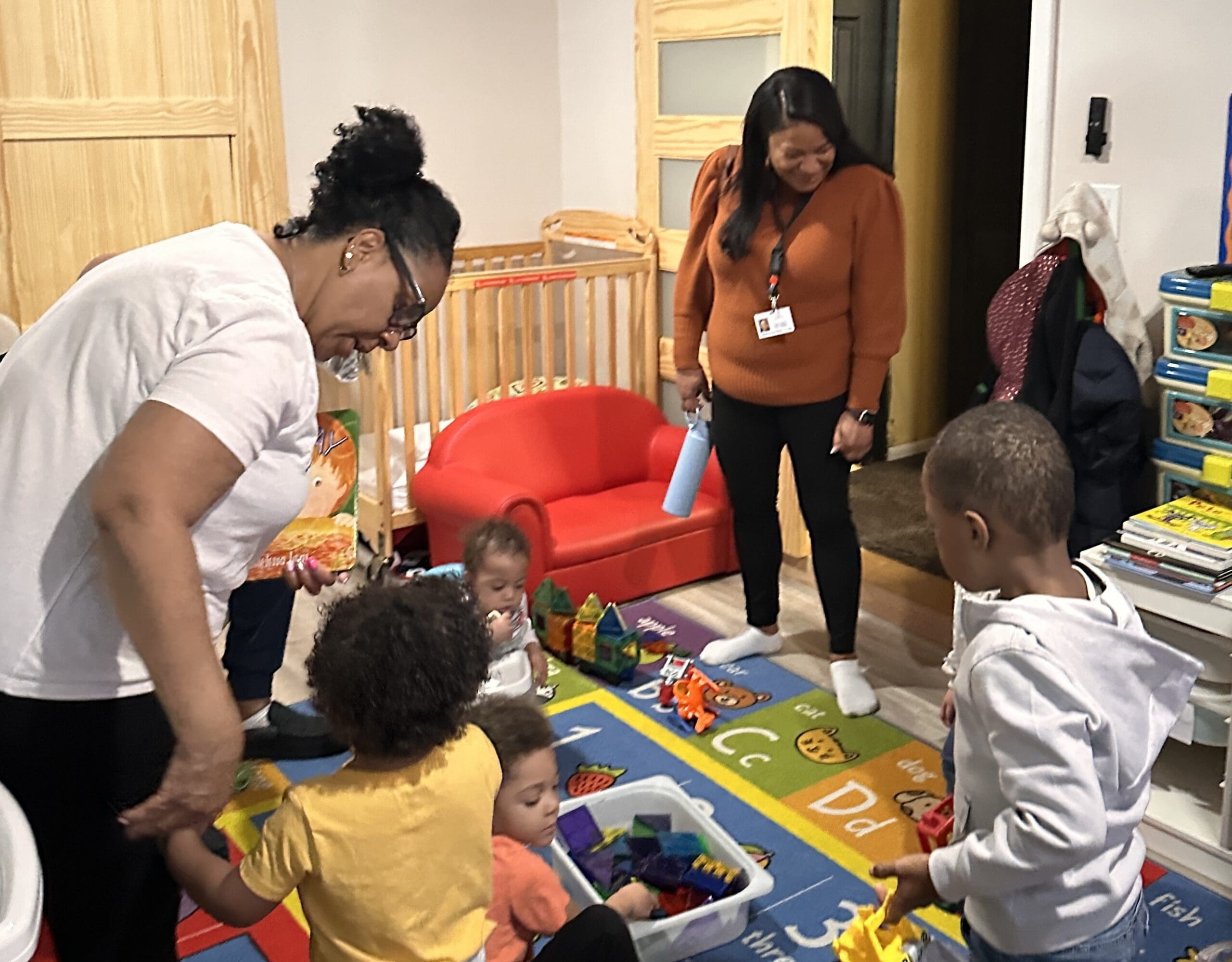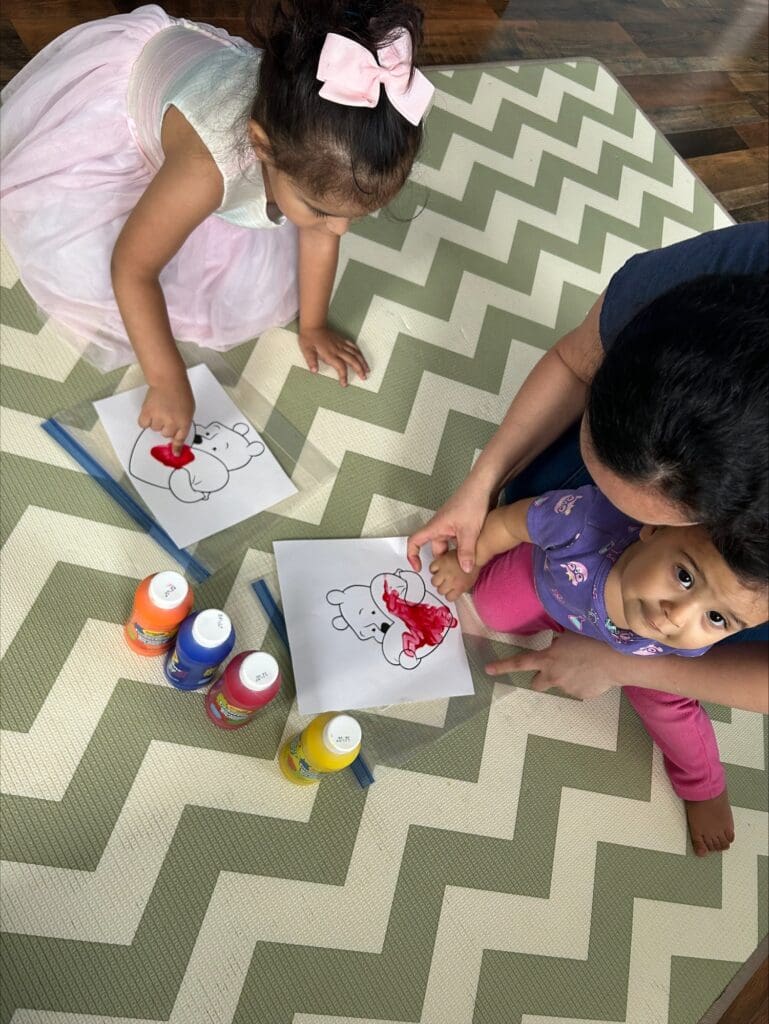Classroom Management 101 for Early Childhood Educators
11/15/24

When most educators think of classroom management, they jump to thinking about dealing with “difficult” behaviors. The reality is that effective classroom management begins long before children step foot into your classroom and can help prevent some of those difficult behaviors before they even begin!
Children’s ability to learn is as much affected by children’s social and emotional development as it is their cognitive abilities. Difficult behaviors should not be just regarded as a disruption that needs to be dealt with in the moment as to not interfere with classroom instruction, but needs to be prepared, planned for, and mitigated by establishing the expectations and behaviors that are conducive to learning.
Effective classroom management allows you to create a safe community that helps develop the whole child. It will enable you to create a space that helps children develop their social-emotional, cognitive, language, and motor skills, while facilitating learning and growth.
Tips for Effective Early Learning Classroom Management
Classroom management starts with planning and preparing your environment and continues every day as you build relationships with the children, as you set and reinforce expectations, rules, and routines. Let’s take a look at several important elements of classroom management!
Early Childhood Environment:
Often referred to as the “third teacher,” a well thought out environment can help mitigate future disruptions to the day. Just like undesirable behavior can affect the learning environment, a well thought out, intentional learning environment can promote desirable behaviors. When thinking about the setup of your space, keep in mind your objectives and the behaviors you want to promote.
Think about these questions as you reflect on your environment.
- Is there is a logical flow to the classroom? For example, are the areas of your classroom set up in a way that makes sense? Are your loud areas like blocks next to your quiet areas? Is your art area accessible to sinks, drying racks, and trashcans to allow for easy clean up without having to cross the entire room?
- Does your environment enable small and large group play, or space for children to play alone?
- Does your environment promote social interactions?
- Are your materials accessible, organized, intentional, inviting, engaging, varied, and developmentally appropriate? Are the materials presented in a way that promotes initiative and independence in choosing activities, but also facilitates cleaning up after play?
Relationships to Support Positive Behaviors:
Building and fostering positive relationships with children at your program is the foundation for positive behaviors. The children need to trust that the adults in their life are reliable, consistent and caring. This allows the child to feel secure in their surroundings and relationships. Positive relationships between the children and their caregivers can also foster a sense of independence, confidence and initiative as they explore their sense of autonomy.
Routines for Children
Children feel more confident and secure when their daily activities are predictable, consistent, and familiar. Having verbal and visual cues will help children get used to routines and promote their sense of independence and confidence as they navigate their day.
Setting Classroom Expectations & Rules
Adults often assume that children know how to behave and act appropriately. But like everything else, children need to be taught what the expectations are and what that looks like in your classroom and program. For example, if you tell them that “being safe,” is a priority in the classroom, they first need to understand what that means. If, “using walking feet” is identified as a way to “be safe,” you will then need teach them where and when that rule is applicable.
One way to do this is by making it a game! Instead of Red Light, Green Light, you could call out “Classroom,” or “Outside.” In one space (classroom) it is safe to walk, and in the other (outside), it is a safe place to run. When creating rules for your class, choose rules that focus on the behaviors you do want rather than on the things you don’t want. Having clear expectations will help minimize conflicts and provide children with the tools to deal with any conflicts that do come up.
Planning Classroom Activities
Planning age-appropriate and purposeful activities can reduce opportunities for classroom conflict and undesirable behaviors. Planning environments and activities with intention based on the children’s development and interests will help keep their minds and bodies occupied. These activities should have a range of objectives that meet the skill sets of the children, while giving them opportunities to explore open-ended ideas independently. There should also be opportunities for the children to engage in large and small groups as well as solo play.
Transitions in the Classroom
While necessary, transitions throughout the day can often be hectic and time-consuming. Teachers can help alleviate chaos and stress during transitions by preparing and planning for them. Teachers can support positive behaviors by setting expectations and giving the children notice when a transition is about to occur. Giving a “notice” can help prepare those children who have difficulties with transitions. There also need to be clear expectations set for what is going to happen next. When they are done cleaning/playing, where are they supposed to go and what should they do?
Addressing Challenging Behavior in Early Childhood Settings
Despite your best efforts, challenging behaviors can’t always be completely avoided. In these situations, fostering the social-emotional skills children need to be able to help self-regulate is key. Young children cannot be expected to just know how to “calm down” the way some adults do. They need to be given the tools to be able to do this and a safe environment in which to practice these skills. They then need to be provided with positive feedback, specific to the situation allowing them to learn what the desired behavior looks and feels like. Once they begin learning key skills, adults can help reinforce and promote positive behavior by celebrating appropriate behaviors when they occur and responding consistently to negative behaviors.

Connecting the Home + Classroom
Keep in mind that consistency shouldn’t just be limited to the classroom. Families need to be involved to provide consistency, too! It is important to share with families the expectations and skills the children are working on, such as cognitive, social emotional, and behavioral skills. Programs need to partner with families by sharing the activities and processes aimed at developing those skills. They should also partner with families to create specific goals for the children. Families can also get involved by creating expectations and routines at home.
Interested in getting more practical tools for coaching + classroom management?
Take a look at these resources, hand-picked by our staff!
- Building Environments That Encourage Positive Behavior: The Preschool Behavior Support Self-Assessment (NAEYC)
- Classroom Management: Top Twenty Principles 16-17 for Early Childhood Education (American Psychological Association)
- Preschool Classroom Management Tips (Brightwheel)
- Erikson’s Stages of Development (Simply Psychology)
Author: Rene Orozco, Step Up To Quality Technical Assistance Coach at Action for Children
Action for Children’s professional development services are provided in partnership with Step Up To Quality, Ohio’s tiered quality rating & improvement system, and funded by the Ohio Department of Job & Family Services, Franklin County Board of Commissioners, and Action for Children’s generous donors.
Action for Children is the local child care resource and referral agency for central Ohio, and is committed to assuring quality early learning experiences for all children. Our services focus on transforming the lives of children by supporting the everyday heroes who most influence our children’s early growth; care givers, educators, parents, and guardians. Learn More.